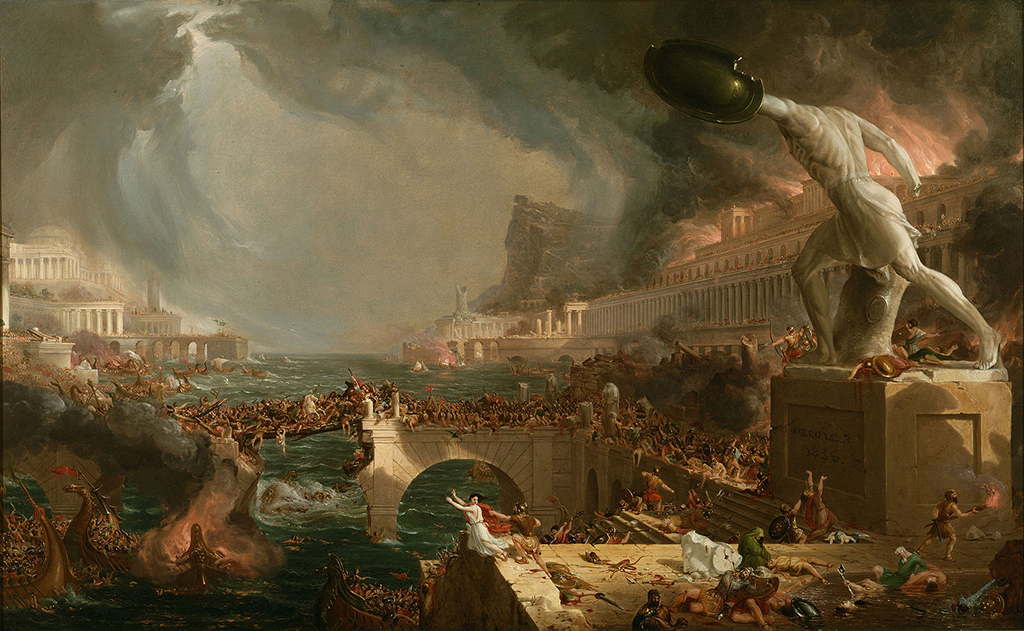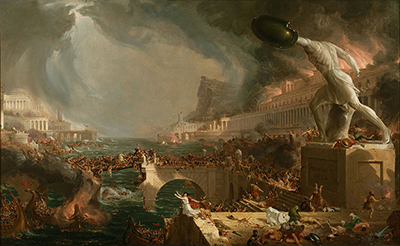The Course of Empire - Destruction, executed by Thomas Cole in 1836, is an oil-on-canvas painting that portrays the capture of an imperial city by a barbarian horde.
Cole, who had gained a reputation as an adept painter of landscapes and historical scenes since his arrival in America from England, created a series of five paintings that are set within the same geographic location and which allude to the rise and fall of civilisation. The destruction of the city, as depicted in the fourth painting of the series, marks the point in which an empire collapses and sets the stage for nature to reclaim the landscape. The painting, owned by the New York Historical Society, measures 39.5 by 63.5 inches.
Cities are often situated in river valleys and civilisations, such those of Egypt or Mesopotamia, are often sustained by the waters that flow out to sea from their inland sources. Rivers irrigate crops, hydrate livestock, provide drinking water for humans and act as commercial highways for fleets of merchant vessels while providing a means for nations to protect their interests and project their naval might upon the open seas. Cole placed the doomed city at the mouth of an estuary, where the river widens to fill the distant horizon, and the besieging army has used this body of water to launch an amphibious attack upon the settlement.
The sea and inland waterways, having served as the arteries of trade that allowed the settlement to prosper and rise to heights of imperial glory, are delivering the city into the hands of its enemies and facilitating its destruction. The turquoise waters evoke images of the Adriatic, Aegean and Mediterranean seas that were the focal point of Greco-Roman civilisation while the colonnaded structures that stand on either side of the waterway are reminiscent of the architectural styles of Classical Antiquity. Smoke, rising from the burning buildings, melds with the tempestuous clouds that darken the afternoon sky while the brackish waters of the estuary are rough with waves.
A giant marble statue, raising a bronze shield in his left hand, is visible at the bottom right-hand side of the canvas and represents the martial glory of the imperial state. Barbarians, disembarking from their warships, surge up the stairs towards the statue while a throng of injured and dying people are scattered around the fallen head of the decapitated statue. A woman, wearing a white gown of expensive fabric, attempts to hurl herself from the edge of the wharf into the estuary below but an enemy soldier grabs her by her red cloak. Another woman, kneeling on the steps besides the lifeless body of her infant child, throws out her arms as a barbarian seizes her by the hair. An archer, part of the city’s defences, is about to release an arrow at the enemy from his position on the plinth.





